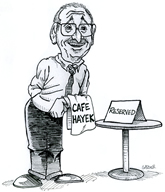The Trump Administration is hyping a trade deal this week with Vietnam that could open that market to more U.S. exports. But it will increase costs for Americans as the current 10% tariff on goods from Vietnam—namely apparel and electronics—increases to 20% and to 40% for “trans-shipments” that originated in China and are exported to the U.S.
There’s still no trade deal with Europe or Japan, and this week Mr. Trump threatened to raise tariffs on Japan to “30%, 35%, or whatever the number is that we determine.”
Increasing tariffs won’t encourage the Federal Reserve to cut rates. Mr. Trump blames Fed Chair Jerome Powell for the slowing economy, but the problem isn’t the cost or availability of money. The 200 basis point cut that Mr. Trump wants is more likely to lead to more inflation and a surge in bond yields that will increase U.S. borrowing costs.
Wall Street Journal columnist Allysia Finley decries progressives’ paucity agenda. A slice:
Not that long ago, the “abundance” agenda was all the rage among liberal elites. Rather than wage class warfare, they called for easing regulations to boost the supply of housing, energy, jobs and more.
Then along came democratic socialist Zohran Mamdani, who won the New York City Democratic mayoral primary on a paucity platform that calls for higher taxes on the rich, greater income redistribution, and expanding government control over private business—or, as he put it in 2021, “seizing the means of production.”
Despite the tension between the two camps, both believe government should re-engineer the economy and society to their desired liberal ends. They simply differ in their methods. One favors government command and control like Mr. Mamdani’s proposed rent freeze. The other prefers a gentler form of government coercion.
Mary Anastasia O’Grady warns of “the lure of comrade Mamdani.” A slice:
As he led a guerrilla war to overthrow dictator Fulgencio Bastista in 1958, Fidel Castro promised Cubans that he was staunchly anticommunist and pro-free-speech. Once Batista was gone, Castro said Cuba would hold elections. Argentina’s Juan Perón wasn’t much different. Before he was first elected in 1946, the strongman said democracy must “serve the people.” As a candidate for president of Venezuela in 1998, Hugo Chávez framed himself as democrat.
All three socialists lied. They were extremists all along. The lesson is that communists and fascists, whom F.A. Hayek called members of “rival socialist factions,” will say anything to get into power and do anything to stay there.
This is something to think about as Zohran Mamdani, the Democratic Party’s socialist candidate for mayor of New York, poses as the morally superior candidate who will respect differences and protect rights. His radical utterances say otherwise and ought to frighten the pants off New Yorkers. Once in office, with an equally extreme City Council, it won’t be easy to stop him from doing grave damage to the place some of us call home.
Before Castro’s communist revolution, Cuba had the fifth-highest per capita income in the Western Hemisphere, where it ranked third in life expectancy. Its literacy rate of 76% was the fourth highest in Latin America.
In the 1950s, according to a 2005 PBS documentary, “Cuba ranked 11th in the world in the number of doctors per capita. Many private clinics and hospitals provided services for the poor. Cuba’s income distribution compared favorably with that of other Latin American societies.”
Today the island has dire shortages of food, medicine, housing and doctors, crumbling hospitals, recurring blackouts and a shrinking population.
Stefan Bartl celebrates “the merchant republic: America at 249.” A slice:
Today, the US economy represents nearly one-quarter of global GDP, despite being home to just five percent of the world’s population. Its GDP per capita ($83,000), is double that of the European Union ($41,000) and far surpassing Russia ($15,000) and China with ($13,000), a testament not just to scale, but to productivity, innovation, and dynamism.
As the Institute of Economic Affairs recently highlighted, even Mississippi, the poorest US state, has a per-capita GDP that now exceeds that of the United Kingdom and rivals France. In the words of IEA’s director Douglas Carswell, “The poorest state in America currently has a higher per capita GDP than Britain. And we’re about to overtake Germany in per capita GDP growth terms this year.”
It’s worth remembering what made America exceptional. This system attracted people who wanted more, gave them room to discover and create, and protected their right to do so. In other words, immigration, innovation, and institutions each made America a powerhouse.
“Freedom of speech is worth celebrating, as Europe ramps up prosecution of ‘hate speech’.”



